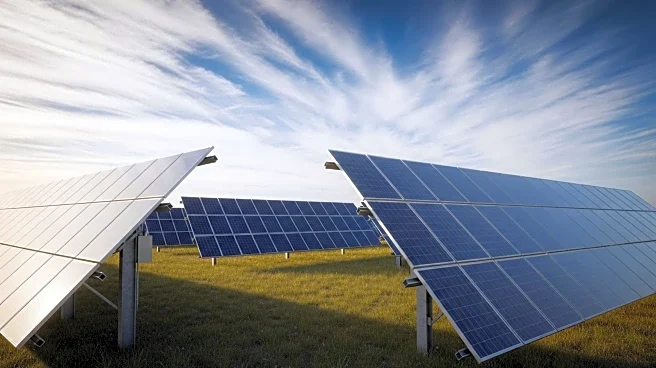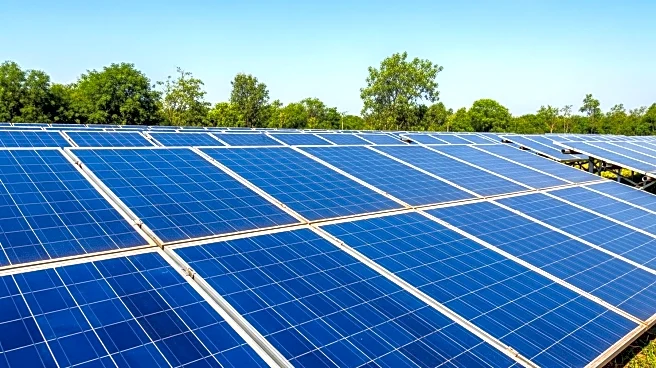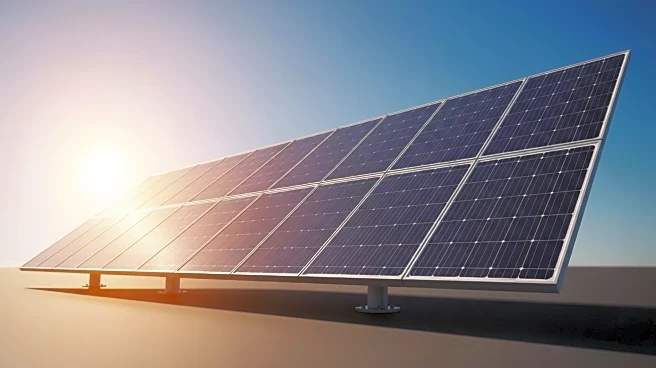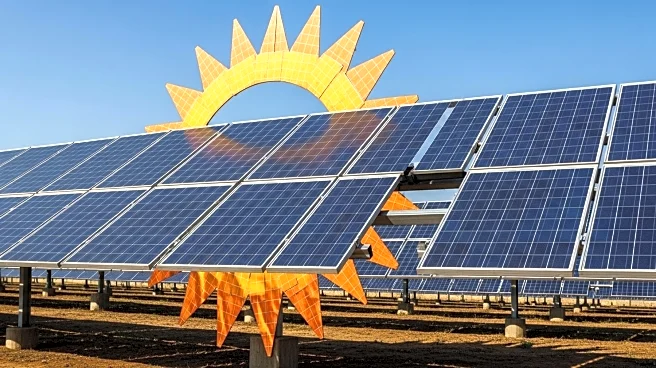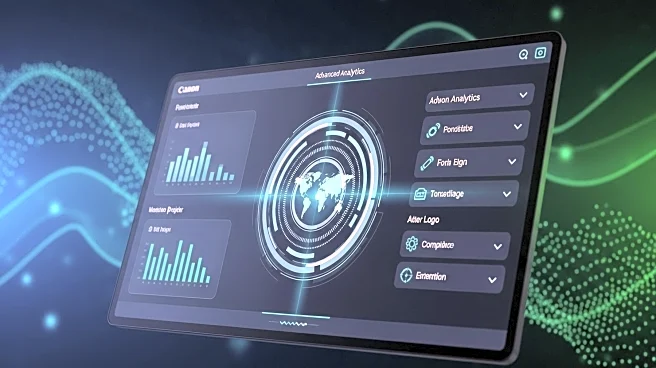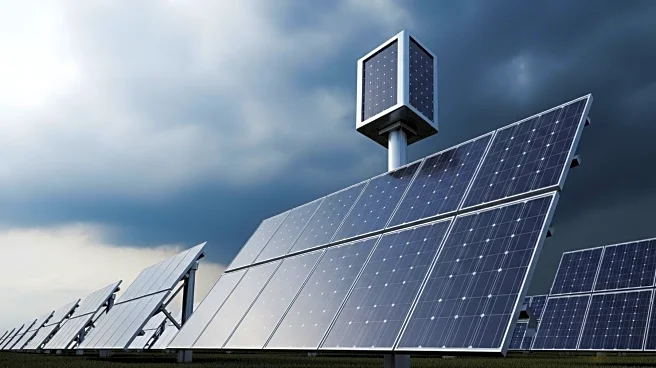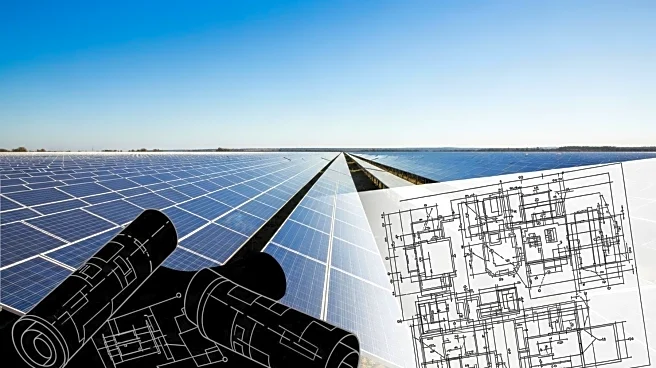What's Happening?
Utility-scale solar farms are increasingly vulnerable to natural disasters, particularly hailstorms, as extreme weather events become more frequent and severe. This has prompted the need for effective methods to assess and repair damage quickly. The article discusses evolving best practices in solar farm damage evaluation, shaped by forensic engineering experience and new inspection technologies. Drone-based thermography is highlighted as a popular method for assessing damage, although it has limitations such as weather dependency and difficulty in detecting certain types of damage. The article emphasizes the importance of combining various inspection methods to deliver actionable data efficiently, including visual inspections, insulation resistance testing, and IV curve tracing.
Why It's Important?
The ability to quickly and accurately assess damage to solar farms is crucial for minimizing downtime and controlling repair costs, which directly impacts the reliability and efficiency of renewable power generation. As the solar industry continues to expand, the need for robust damage evaluation methods becomes more pressing. Effective damage assessment ensures that solar farms can resume operations swiftly, reducing business interruption losses and supporting the transition to clean energy. The article underscores the importance of strategic testing and repair planning to avoid unnecessary costs and delays, which is vital for maintaining investor confidence and meeting energy production targets.
What's Next?
The solar industry is likely to continue developing and refining damage evaluation techniques as extreme weather events become more common. Stakeholders, including utility executives, plant managers, and engineers, will need to collaborate on improving inspection technologies and repair strategies. The integration of advanced software and AI in damage assessment may become more prevalent, although challenges remain in training algorithms to identify unique damage patterns. The industry may also focus on pre-storm preparation, such as updating operational benchmarks, to improve post-event diagnostics and streamline repair processes.
Beyond the Headlines
The increasing frequency of extreme weather events poses ethical and environmental challenges for the solar industry. As solar farms expand, they must balance the need for rapid damage assessment with environmental considerations, such as minimizing the impact of repair activities on local ecosystems. The reliance on technology, such as drones and AI, raises questions about data privacy and the potential for over-reliance on automated systems. The industry must navigate these complexities while striving to maintain the integrity and sustainability of renewable energy sources.
